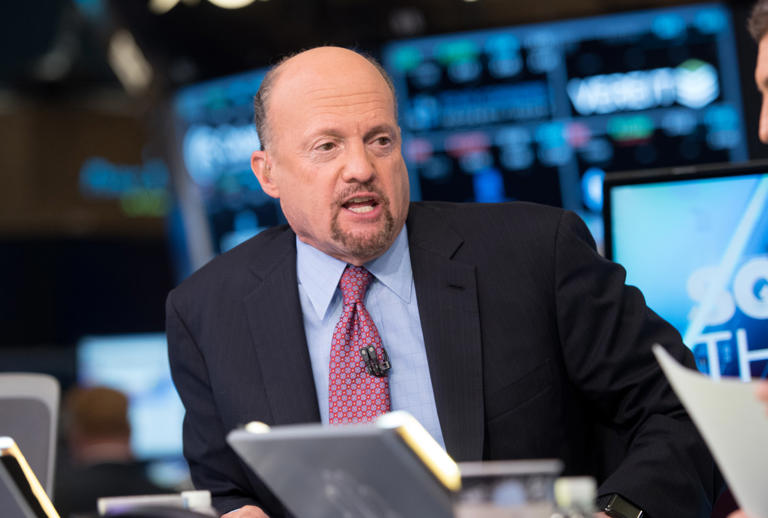Jim Cramer’s Perspective on U.S. Debt Risks and Stock Market Implications
The U.S. debt crisis has sparked heated discussions among financial experts. Jim Cramer, a renowned market analyst and host of Mad Money, has issued a stark warning about the potential risks. He highlights how the growing national debt could disrupt the stock market and broader economy. Investors are paying close attention to his analysis, which dives into the implications of U.S. fiscal policies.
Understanding the U.S. Debt Situation
The United States faces a mounting debt problem. As of 2023, the national debt has exceeded $33 trillion. This staggering figure raises concerns about long-term economic stability. Financial experts argue that unchecked borrowing could lead to significant consequences for markets and consumers.
One of the primary issues is rising interest rates. As the Federal Reserve combats inflation, higher rates increase borrowing costs. This affects not only government financing but also businesses and individuals. The burden of servicing debt grows heavier, creating ripple effects across the economy.
Another concern is reduced investor confidence. When debt levels soar, global investors may begin to question the U.S. government’s ability to manage its finances. This skepticism can lead to higher yields on Treasury bonds, further straining the federal budget.
The Role of Credit Ratings
Credit rating agencies play a pivotal role in shaping perceptions of U.S. debt. In recent months, Moody’s has expressed concerns about the country’s fiscal trajectory. A downgrade in the U.S. credit rating could make borrowing even more expensive.
Jim Cramer has pointed out that such downgrades often shake investor confidence. He warns that these developments could trigger volatility in the stock market. Investors may shift their focus to safer assets, such as gold or cash reserves, to hedge against potential losses.
Historical Context of Debt Crises
Historical patterns provide valuable insights into the current situation. For instance, the 2011 debt ceiling crisis led to a downgrade of the U.S. credit rating by Standard & Poor’s. This event caused market turbulence and increased borrowing costs.
Cramer emphasizes that while history doesn’t always repeat itself, it often rhymes. Investors should remain vigilant and prepare for potential disruptions. Understanding past events helps to navigate future challenges effectively.
Impact on the Stock Market
The stock market is highly sensitive to macroeconomic factors, including national debt. Jim Cramer has highlighted key areas where debt risks could directly affect stocks. These include corporate earnings, market sentiment, and sector-specific vulnerabilities.
Corporate earnings are a major concern. As borrowing costs rise, companies may face reduced profitability. This is particularly true for firms relying on debt to finance operations or expansion. Lower earnings can result in declining stock prices, especially in interest-sensitive sectors like real estate and utilities.
Market sentiment is another critical factor. News of escalating debt levels or credit rating downgrades can trigger panic among investors. This often leads to sell-offs, driving down stock prices. Cramer advises investors to focus on fundamentals rather than short-term market reactions.
Sector-Specific Analysis
Different sectors of the economy react differently to debt-related risks. For instance, technology stocks, which often rely on significant capital investment, may suffer from higher borrowing costs. Conversely, defensive sectors like healthcare and consumer staples might perform better during periods of uncertainty.
Cramer believes that diversification is key to weathering these challenges. By spreading investments across various sectors, investors can mitigate risks associated with specific industries. He also notes that sectors with strong cash flows and low debt levels are better positioned to withstand economic pressures.
Global Market Implications
U.S. debt risks don’t just affect domestic markets; they have global repercussions. As the world’s largest economy, the United States plays a central role in global trade and finance. A crisis in U.S. debt markets could lead to disruptions in international markets.
Jim Cramer warns that foreign investors, who hold a significant portion of U.S. debt, may reduce their exposure. This could lead to a decline in the value of the U.S. dollar, impacting global trade dynamics. Emerging markets, which often rely on dollar-denominated debt, might face additional challenges.
Strategies for Investors
In light of these risks, Jim Cramer has shared practical strategies for investors. He emphasizes the importance of risk management and long-term planning. By adopting a disciplined approach, investors can navigate uncertain times more effectively.
One strategy is to focus on high-quality stocks. Companies with strong balance sheets and consistent earnings are more likely to weather economic storms. Cramer advises investors to prioritize these firms when building their portfolios.
Another approach is to maintain liquidity. Keeping a portion of assets in cash or cash-equivalents provides flexibility. This allows investors to take advantage of opportunities during market downturns. Cramer also suggests considering alternative investments, such as bonds or commodities, to diversify risk.
The Importance of Staying Informed
Staying informed is crucial for making sound investment decisions. Jim Cramer encourages investors to follow reliable sources of financial news and analysis. Understanding the broader economic context can help identify trends and opportunities.
Cramer also stresses the value of consulting with financial advisors. Professionals can provide personalized advice tailored to individual goals and risk tolerance. This ensures a more strategic approach to investing during turbulent times.
Long-Term Perspective
Despite the challenges posed by U.S. debt risks, Cramer remains optimistic about the long-term prospects of the stock market. He believes that disciplined investors who focus on fundamentals will ultimately succeed.
Cramer advises against making impulsive decisions based on fear or speculation. Instead, he advocates for a steady, patient approach. By keeping a long-term perspective, investors can navigate short-term volatility while building wealth over time.
Conclusion
Jim Cramer’s insights on U.S. debt risks offer valuable guidance for navigating uncertain markets. While the challenges are significant, they are not insurmountable. By understanding the broader context and adopting proactive strategies, investors can protect their portfolios and capitalize on opportunities.
As the national debt continues to grow, staying informed and prepared is more important than ever. With the right approach, investors can weather the storm and emerge stronger in the long run.

